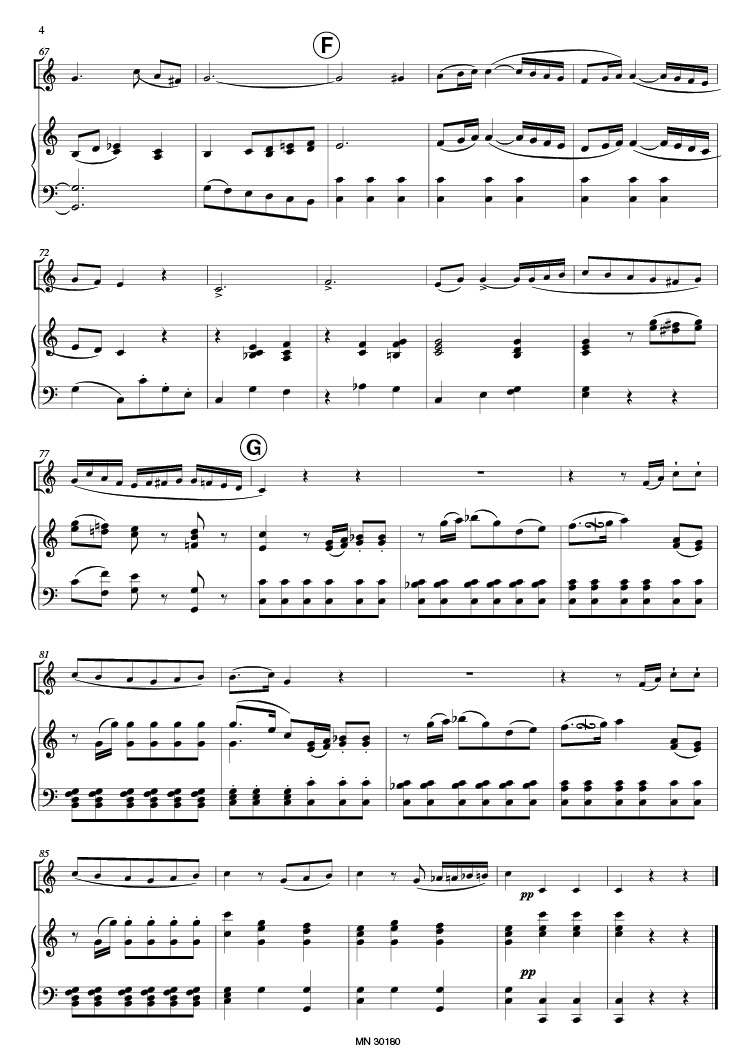
Mozart/Kail Romanze
#Instrumentation: Trumpet and PianoRange: c' - d'’
Difficulty (I-VI): II-III
Parts for: Trumpet in B flat or F
Series: The Kail Legacy
Editor: Edward H. Tarr
The present work is the third in a manuscript of Kail's containing his own Variations for the Trumpet in F and his arrangement of Donizetti's Cavatina and Waltz , all of which also exist there in additional versions for trombone and fluegelhorn. A date of performance is not known. What was Kail's source? Nothing less than the second movement in rondo form from the Fourth Horn Concerto, K. 495, composed by Wolfgang Amadeus Mozart (1756-1791) in 1786. As a hornplayer, Kail presumably knew this work very well. His transcription follows the original model faithfully, with the following exceptions: Kail gave the orchestral section in bars 11-20 to the solo instrument as well and made a small cut of four measures starting in bar 32; but since he allowed the orchestral interlude in bars 42-45 to be played twice, his version contains the same number of bars as Mozart's original composition.
In adapting the E flat horn part to the F trumpet, Kail transposed the accompaniment one step higher, to C major instead of B flat major. Furthermore, he notated the solo part one octave lower, so that the trumpet would sound in the same register as the horn. Some changes made by Kail capture our attention. At the beginning of bars 2 and 3, for example, Mozart wrote an quaver triplet, which Kail also dutifully notated. Later, however, he changed this rhythm to that of an quaver and two semiquavers, simply by adding a beam to the second and third notes. (He kept the triplet only in bar 24.) Since the trombone and flugelhorn versions retain the original triplet reading, we are probably not far from the truth if we suppose that Kail once had a trumpet pupil who was weak on rhythm and who was allowed to play the piece with such a significant rhythmic alteration. A pity, by the way, that Kail changed Mozart's e' flat to e' in bar 67 (sounding a' flat and a' , respectively).
A truly startling feature of Kail's transcription is the freedom with which he added ornaments of his own. Today we are not used to making any changes in the sublime melodies of the immortal Classical masters whom we have long since placed on an unattainable pedestal. The art of ornamentation has no place in modern instrumental instruction, only a perfect rendering into sound of the notes on a printed page. It must, however, have been an important element of performance practice of those days to give a more personal shape to melodies by adding ornaments. As is well known, such a procedure was an everyday occurrence in the world of opera. In order that the gentle reader may compare Mozart's and Kail's versions with one another, we have printed them above one another in an appendix to the piano score.


